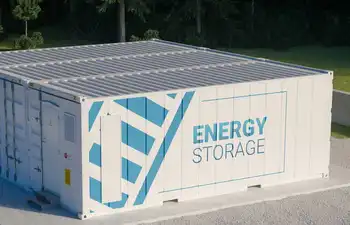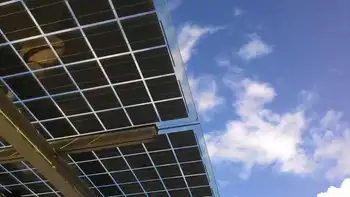Wind power is Competitive on Reliability and Resilience Says AWEA CEO

Substation Relay Protection Training
Our customized live online or in‑person group training can be delivered to your staff at your location.

- Live Online
- 12 hours Instructor-led
- Group Training Available
Wind farm reliability services now compete in wholesale markets, as FERC and NERC endorse market-based solutions that reward performance, bolster grid resilience, and compensate ancillary services like frequency regulation, voltage support, and spinning reserve.
Key Points
Grid support from wind plants, including frequency, voltage, ramping, and inertial response via advanced controls.
✅ Enabled by advanced controls and inverter-based technology
✅ Compete in market-based mechanisms for ancillary services
✅ Support frequency, voltage, reserves; enhance grid resilience
American Wind Energy Association CEO Tom Kiernan has explained to a congressional testimony that wind farms can now compete, as renewables approach market majority, to provide essential electric reliability services.
Mr Kiernan appeared before the US Congress House Energy and Commerce Committee where he said that, thanks to technological advances, wind farms are now competitive with other energy technologies with regard to reliability and resiliency. He added that grid reliability and resilience are goals that everyone can support and that efforts underway at the Federal Energy Regulatory Commission (FERC) and by market operators are rightly focused on market-based solutions to better compensate generators for providing those essential services.
AWEA strongly agreed with other witnesses on the panel who endorsed market-based solutions in their submitted testimony, including the American Petroleum Institute, Solar Energy Industries Association, Energy Storage Association, Natural Resources Defence Council, National Hydropower Association, and others. However, AWEA is concerned that the Department of Energy’s recent proposal to provide payments to specific resources based on arbitrary requirements is anti-competitive, and threatens to undermine electricity markets that are bolstering reliability and saving consumers billions of dollars per year.
“We support the objective of maintaining a reliable and resilient grid which is best achieved through free and open markets, with a focus on needed reliability services – not sources – and a programme to promote transmission infrastructure.”
Kiernan outlined several major policy recommendations in his testimony, including reliance on competitive markets that reward performance to ensure affordable and reliable electricity, a focus on reliability needs rather than generation sources and the promotion of transmission infrastructure investment to improve resilience and allow consumers greater access to all low-cost forms of energy.
The CEO of the North American Electric Reliability Corporation (NERC) has recently testified that the state of reliability in North America remains strong and the trend line shows continuing improvement year over year. Technological advances and innovation by over 100,000 US wind workers enable wind farms today to provide the grid reliability services traditionally provided by conventional power plants. NERC’s CEO emphasised in its testimony at last month’s hearing that “variable resources significantly diversify the generation portfolio and can contribute to reliability and resilience in important ways.”











